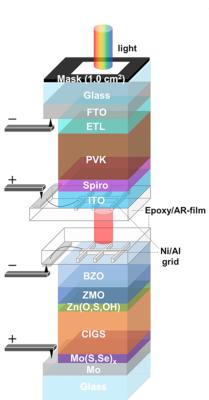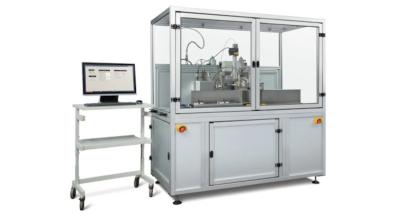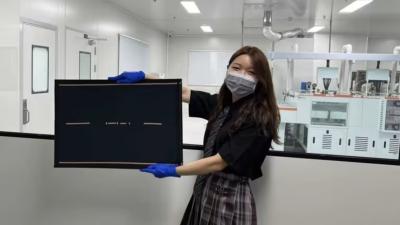Perovskite-Info weekly newsletter
Published: Tue, 07/19/22
The Perovskite-Info newsletter (July 19, 2022)
Cannot read this? View it online here
Swansea University and Tata Steel launch perovskite solar project
Tata Steel UK and Swansea University are collaborating on a project for solar roofing panels that can be printed on the steel used in buildings. The solar roofing panels would enable buildings to generate, store and release their own secure electricity supply. This could reduce the use of fossil fuels and alleviate pressure on the National Grid.
Named ‘Active Buildings’, the concept has reportedly shown success in the operation of two buildings on the Swansea University campus for several years. The new research aims to explore the technology’s potential further and accelerate the process of turning it into products for industry to manufacture.
Researchers develop four-terminal tandem perovskite/CIGS solar cell with 26.2% efficiency
Scientists from the University of Tokyo have reported a 26.2% power conversion efficiency for a four-terminal tandem solar cell based on perovskite and copper, indium, gallium and selenium (CIGS). The researchers said these results are a world record for such tandem solar devices and attributed the improvements to the performance of the perovskite top cell.

They built the 1-square-centimeter perovskite device using a transparent conductive material made of indium tin oxide (ITO), which was deposited via sputtering and without thermally evaporated Molybdenum oxides ( MoOx). “By eliminating the use of the MoOx buffer layer, we were able to develop semi-transparent PVK cells with higher durability and transmittance,” the scientists said.
DOE announces $56 Million to advance U.S. solar manufacturing
The Biden-Harris Administration, through the U.S. Department of Energy (DOE), has announced new initiatives and $56 million in funding to promote innovation in solar manufacturing and recycling. The funding will aim to help make clean energy more affordable and reliable, create jobs and enhance U.S. economic growth and competitiveness. Developing more solar power, the cheapest form of new electricity supply, is key to achieving President Biden’s goal of 100% clean electricity by 2035.
The new programs that were announced are designed to drive innovation in solar technology and manufacturing, supporting opportunities for the U.S. to expand production of thin-film modules, which do not rely on foreign-dominated supply chains, as well as supporting newer technologies like perovskite solar cells.
The Solar Energy Research Institute of Singapore (SERIS) upgrades equipment towards industrial production of perovskite-silicon tandem solar cells
The Solar Energy Research Institute of Singapore (SERIS) at the National University of Singapore (NUS) announces that it will upgrade its "Spatial Atomic Layer Deposition" (SALD) equipment. SoLayTec and SERIS have been working closely together for over a decade in the field of silicon solar cells. Recently, SERIS stated that SoLayTec will upgrade its existing ALD system using the latest technology of SALD BV, a Dutch technology start-up, for development of scalable perovskite-silicon tandem solar cells.

"Upgrading to the new SALD equipment brings us significant advantages," explains Dr. Shubham Duttagupta, Deputy Director of the Next-Generation Industrial Solar Cells & Modules Cluster at SERIS. The Dutch company SALD BV has developed a patented technology for applying precise coatings on an industrial scale that can be as thin as a single atom. An atomically thin coating, as can be achieved with the SALD technology, can make the cells significantly more robust. SERIS wants to take the leap “from lab to fab” with the new SALD machine.
Researchers develop strain relaxation approach for improving the stability of quasi-2D perovskite solar cells
A research team, led by Prof. Zhou Huiqiong's group from the National Center for Nanoscience and Technology (NCSNT) of the Chinese Academy of Sciences (CAS), has developed a strain relaxation strategy to study the effect of residual strain on properties of quasi-two-dimensional (2D) perovskites.
The introduction of hydrophobic spacer cations makes quasi-2D perovskites more stable compared with traditional 3D perovskites, but the stability of perovskites remains unsatisfactory. Residual strain is closely related to the crystallographic properties, which in turn can significantly affect the photovoltaic properties and stability of perovskites. The research team investigated the residual strain in quasi-2D perovskite with mixed spacer cations by X-ray diffraction (XRD) and atomic force microscope (AFM). They found that there is severe tensile strain along the out-of-plane direction in pristine perovskite film, leading to poor crystallinity and insufficient stability issues. With an appropriate composition of spacer cations, the tensile strain is effectively released.
Researchers develop strain relaxation approach to improve the stability of quasi-2D perovskite solar cells
A research team, led by Prof. Zhou Huiqiong's group from the National Center for Nanoscience and Technology (NCSNT) of the Chinese Academy of Sciences (CAS), has developed a strain relaxation strategy to study the effect of residual strain on properties of quasi-two-dimensional (2D) perovskites.
The introduction of hydrophobic spacer cations makes quasi-2D perovskites more stable compared with traditional 3D perovskites, but the stability of perovskites remains unsatisfactory. Residual strain is closely related to the crystallographic properties, which in turn can significantly affect the photovoltaic properties and stability of perovskites. The research team investigated the residual strain in quasi-2D perovskite with mixed spacer cations by X-ray diffraction (XRD) and atomic force microscope (AFM). They found that there is severe tensile strain along the out-of-plane direction in pristine perovskite film, leading to poor crystallinity and insufficient stability issues. With an appropriate composition of spacer cations, the tensile strain is effectively released.
TubeSolar and ZSW reach milestone on the way to industrializing flexible perovskite solar cells
TubeSolar, together with the Centre for Solar Energy and Hydrogen Research Baden-Württemberg (ZSW), has reached an important milestone on the way to industrial production of its novel photovoltaic technology: an efficiency record of 14% was achieved on solar films in the industrially suitable "roll-to-roll" process. This was achieved as part of TubeSolar's perovskite research activities.
In the process, the partners deposited all layers - with the exception of the front and rear contacts - using slot die. The speed of the coating process was over one metre per minute. The combination of this industrially suitable, fast production process and the high efficiency was referred to as 'groundbreaking' by the Companies. The flexible solar cells are used for the production of tubular photovoltaic modules, which can be used in agri-photovoltaics, among other applications.
Researchers design flexible X-Ray detectors based on molecular perovskites
Researchers from China's University of Science and Technology of China (USTC) and Shaanxi Normal University have synthesized a new molecular perovskite, DABCO-CsBr3 (DABCO = N,N′-diazabicyclo[2.2.2]octonium), for use in flexible X-ray detectors. The material was prepared from DABCO, CsBr, and HBr in aqueous solution and obtained in the form of colorless crystals.
The team found that DABCO-CsBr3 possesses good mechanical properties for use in flexible devices. Compared with the metal-free equivalent DABCO-NH4Br3, DABCO-CsBr3 has a stronger X-ray attenuation capability. The researchers built a flexible X-ray detector, using a poly(vinylidene fluoride) (PVDF) polymer matrix that was mixed with DABCO-CsBr3 to create a composite film. This film shows a linear relationship between the X-ray-induced current density and the X-ray dose rate. According to the team, the material could have applications in X-ray security screening systems or medical diagnostics.
DaZheng Micro-Nano Technologies announces commercialization of large flexible perovskite solar panels
A Chinese startup called DaZheng (Jiangsu) Micro-Nano Technologies has announced that it has reached mass production of large, flexible perovskite solar panels, based on technology that was initially developed by researchers in Japan.

DaZheng (Jiangsu) Micro-Nano Technologies reportedly invested 80 million yuan (around USD$11.85 million) to build a production line with an annual capacity of 10 megawatts in Jiangsu Province. The 40 cm by 60 cm panels will be cut into smaller pieces and shipped to smartphone and tablet makers in China.
Metalgrass LTD
9 Har Tsin St.
Kfar Sava Hasharon 4430809
ISRAEL
Unsubscribe | Change Subscriber Options


